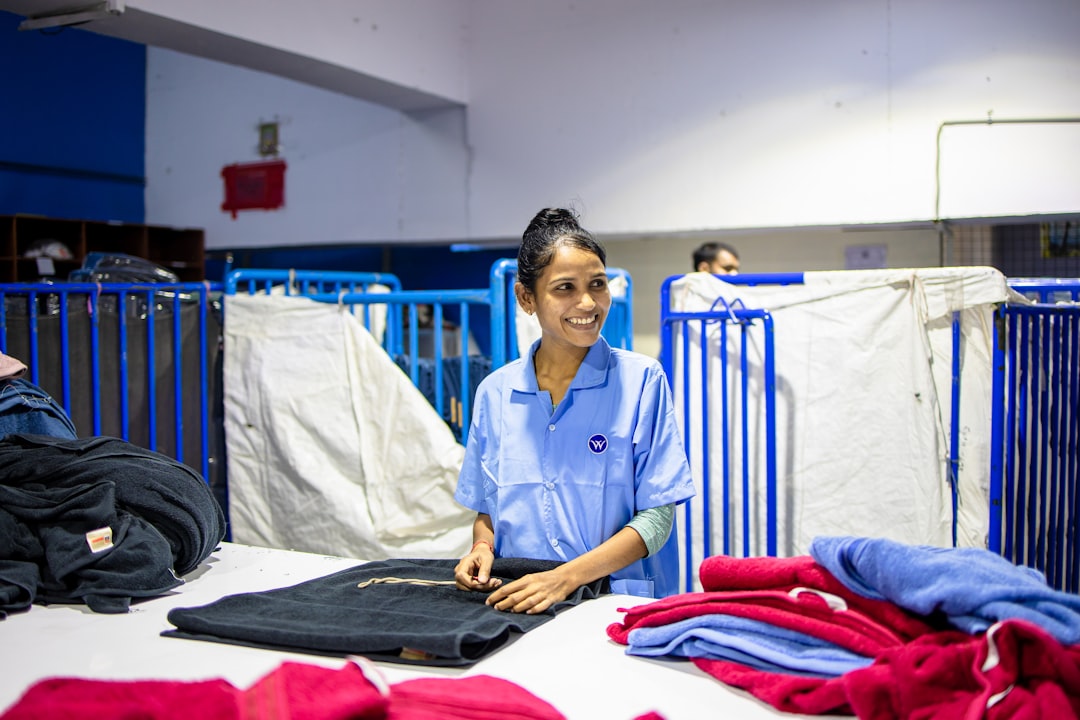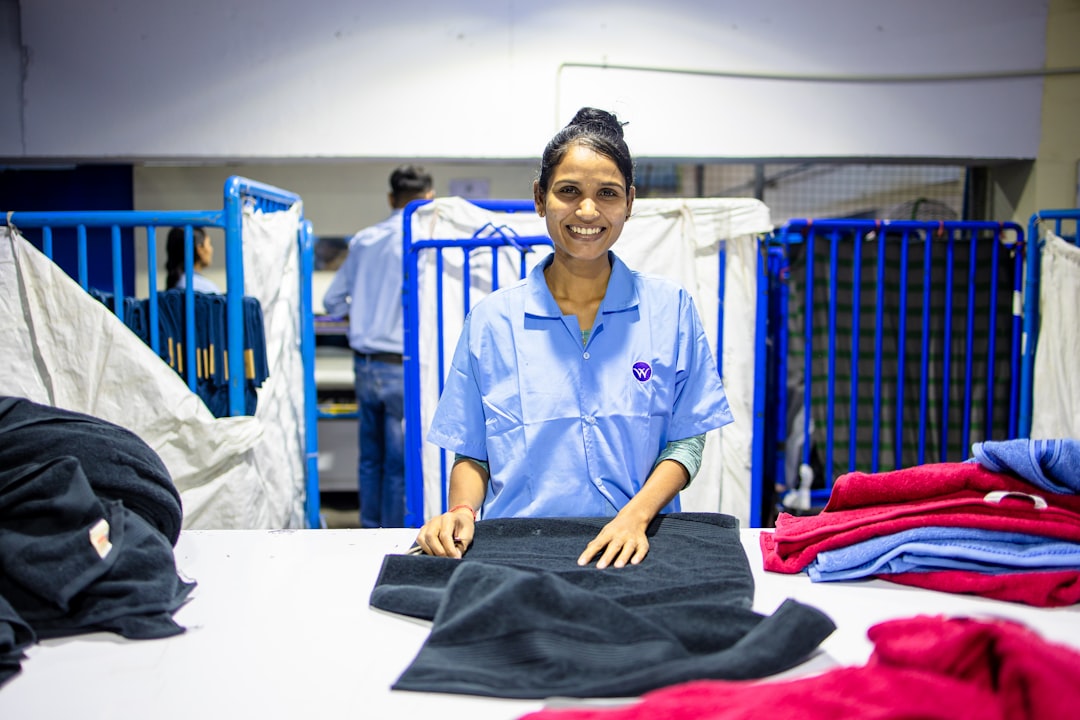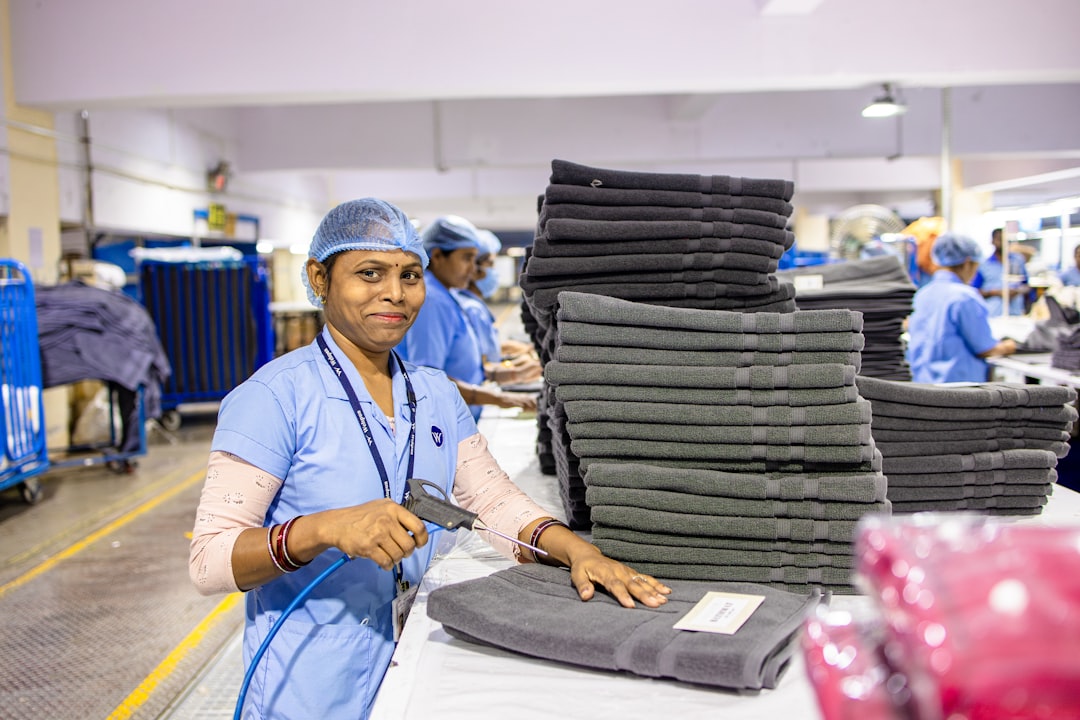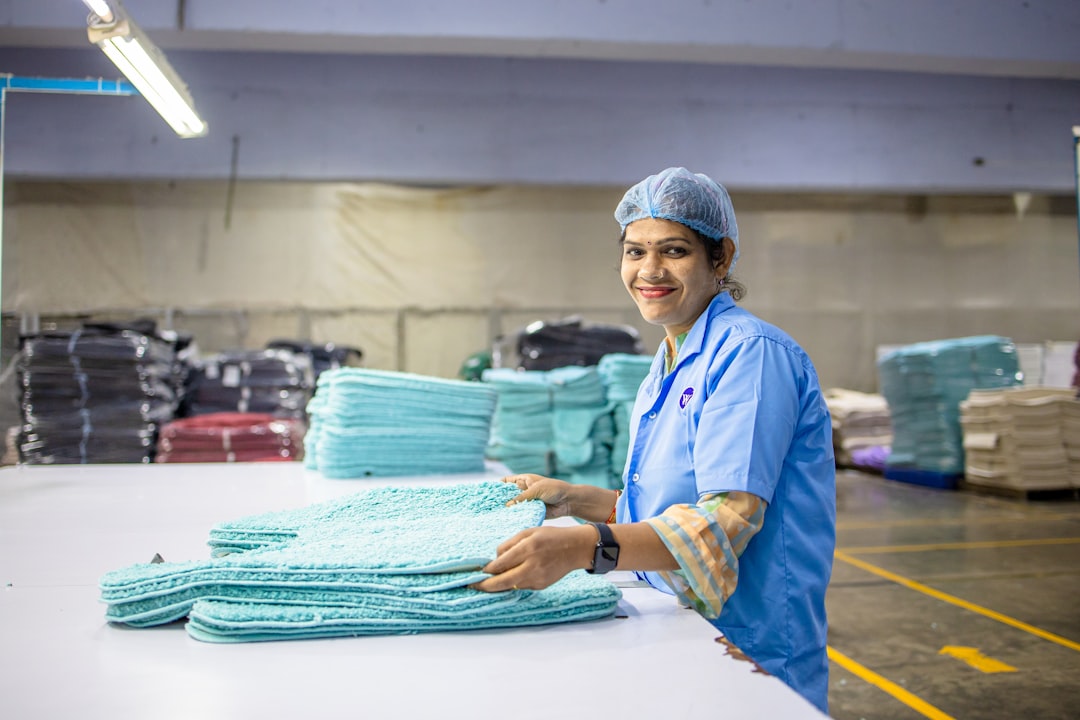

Engage prospects with a scan and streamline customer engagement with FREE QR code marketing tools by Sona – no strings attached!
Create a Free QR CodeFree consultation

No commitment

Engage prospects with a scan and streamline customer engagement with FREE QR code marketing tools by Sona – no strings attached!
Create a Free QR CodeFree consultation

No commitment
In today’s digitally driven world, QR codes have become a strategic lever for healthcare linen service providers seeking to bridge the gap between physical interactions and actionable digital feedback. Increasing competition and rising regulatory standards around infection control and patient satisfaction have exposed a persistent problem: traditional, manual processes often leave providers without real-time visibility into service quality or compliance gaps. Manual forms, sporadic paper surveys, and untracked feedback contribute to missed opportunities and unaddressed complaints, eroding both operational efficiency and trust.
Healthcare linen service providers face constant pressure to deliver spotless, securely managed linens while simultaneously proving compliance and exceeding customer expectations. Yet, critical feedback from facility managers, nurses, or patients often goes missing simply because there is no simple, immediate channel for input at the point of service. QR codes address this by modernizing feedback collection with Google Forms QR codes, turning every linen drop-off or usage point into a rapid-response opportunity to capture insights before they slip through the cracks.
By harnessing QR codes as a feedback tool, providers unlock a scalable way to ensure infection control, support quality assurance, and demonstrate their commitment to continuous improvement. This guide explores how healthcare linen service providers can leverage QR codes to streamline feedback capture, overcome common gaps in data visibility, and operationalize actionable insights that reinforce trust and drive measurable business value.

Modern healthcare environments demand timely, high-impact feedback to maintain compliance and service quality. Many providers still contend with the frustration of missing valuable input: feedback that never gets captured or arrives too late to drive action. Untracked issues can bottleneck workflows, while overlooked complaints prolong negative experiences and undermine accountability. QR codes reframe this entire process by putting a scannable, data-rich doorway to feedback directly where service happens.
The biggest shift is moving away from analog methods. Printed comment cards, paper checklists, phone hotlines without case IDs, and emails that get lost in crowded inboxes are all prone to delays and data loss. QR codes produce the opposite effect. They shorten the pathway from observation to action by launching a short, mobile-friendly survey or incident form in seconds. When feedback feels effortless and immediate, you capture a larger, higher quality sample that reflects the true state of your service.
Providers routinely miss key signals like recurring complaints tied to a specific shift or location when using paper-driven methods. QR-powered instant surveys, automated notifications, and even on-the-spot video testimonials create a responsive feedback culture that values speed and transparency. Over time, this data informs operations, training, and client communications, producing measurable gains in satisfaction and retention.

Healthcare linen services have long struggled with the gap between when a problem occurs and when it is reported or resolved. Anonymous feedback and delayed complaints mean missed opportunities to improve. Small problems can multiply quickly, including unnoticed linen shortages or unreported hygiene lapses that only surface during audits. Providers need a way to capture frontline insight as it happens, then route it to the right person for rapid remediation.
QR codes in cleaning operations tackle these challenges directly. They transform routine physical interactions into digital touchpoints that capture context-rich, time-stamped signals. When placed on high-traffic items like carts and delivery slips, they normalize feedback and reduce the effort required to report issues. The result is a continuous feedback loop that supports infection control, service reliability, and proactive client communication.
With QR codes on delivery logs, room signage, uniform tags, and linen bags, feedback becomes a routine part of daily operations rather than an afterthought. When combined with analytics, the data supports a stronger quality assurance program and a more confident audit posture.

Missing, incomplete, or inconsistent feedback often stems from a one-size-fits-all collection process. Healthcare linen service providers can overcome this by matching QR code formats to specific scenarios. Each format offers unique capabilities that help you capture the right data and trigger the right action at the right moment.
Begin by mapping destinations and formats to the tasks your stakeholders perform. Clinical staff may need a one-tap incident reporting form. Administrators might prefer a prefilled email to document an SLA variance. Infection control teams could require direct access to a compliance checklist or training module. Designing QR codes with these needs in mind increases adoption and data quality.
Choosing between static and dynamic matters. Static codes are appropriate for fixed destinations like a universal feedback policy or a general contact page. Dynamic codes are better for campaigns that require detailed analytics, frequent content updates, or segmentation by audience, location, or service line. A modern QR platform streamlines management, version control, and data access across all of these formats.

Growth often hides in the gaps between your people, your processes, and the places where service is experienced. In healthcare linen services, these micro-moments are everywhere: at the cart, in the hallway, in the ward, at receiving, and in administrative offices. Strategic QR deployment turns these physical surfaces into always-on engagement points that capture actionable business intelligence.
Rather than treating feedback as a quarterly exercise, treat it as a daily operational signal. Place codes in the path of normal work, ask precise questions, and route responses to the teams that can act immediately. Over time, trends emerge that inform upsell opportunities, renewal risk, and targeted coaching for staff.
By deploying QR codes precisely where stakeholders engage, providers transform daily operations into a flow of insights that support both growth and retention. The data can reveal contract expansion opportunities such as premium product upgrades, route optimization, or added services that meet demonstrated needs.
QR codes support a wide range of feedback and engagement scenarios across healthcare environments. The most effective use cases share a few traits: they are simple to scan, involve a short path to action, and clearly communicate the benefit to the user. Below are three high-impact examples tailored to healthcare linen operations.
Each use case can be adapted by department. Surgical units may require a specialized survey that references sterile processing standards. Maternal wards may emphasize comfort and softness. Administration might focus on SLA timeliness and billing accuracy. Differentiating by audience ensures the right questions get asked and the right metrics get tracked.
A significant challenge in healthcare linen services is limited account-level visibility. Providers often lack clarity on which facility contacts are most engaged, which departments face recurring issues, and who influences renewal or expansion. Every QR scan, when tracked responsibly, becomes a signal of intent and context that can enrich your CRM and sharpen your outreach.
Start by assigning unique QR codes to different touchpoints so you can segment the feedback. Align codes with buyer and user roles such as nurse managers, environmental services, infection control, and administrators. Over time, patterns will reveal which stakeholders need more education, which accounts show strong advocacy, and where to focus service improvements.
Be mindful of privacy requirements. Do not collect protected health information through QR feedback. Focus on operational signals such as delivery quality, contamination status, and inventory levels. With clear consent language and minimal data capture, you can build a robust, compliant feedback program that still delivers precise segmentation for outreach and education. Sona is an AI-powered platform for identity resolution and revenue attribution; see Sona’s blog post Attribution Model Frameworks for frameworks that align scan data with pipeline.
Disconnected campaigns are common in healthcare linen services. Disjointed messages, delayed follow-up, and isolated feedback channels create confusion and diminish the impact of even the best service. QR codes are a connective tissue across channels that add interactivity to print, signage, and in-person conversations while capturing clean data that fuels continuous improvement.
Treat QR codes as a standard element of your marketing and service assets. Every print piece, event display, and physical delivery item should create a path to action and a trackable signal. This puts you in control of the conversation and allows you to measure the effectiveness of each channel.
A centralized QR platform ensures engagement and feedback data flow into a single source of truth. You can monitor scan rates, compare performance by channel, and route follow-ups to sales, operations, or quality teams. This unifies messaging while maintaining the rigor required for a healthcare environment.
Effective execution requires structure. Many teams generate a code and hope for the best, only to discover poor scan rates or unhelpful submissions. A repeatable process helps you plan with intent, deploy with clarity, and optimize with data. Use the steps below to roll out sustainable, high-performing QR feedback campaigns.
Start with a single, measurable objective. Examples include reducing delivery complaint rates by a specific percentage, shortening incident response times, or increasing the percentage of completed delivery verifications within a set window. Align stakeholders around the objective so messaging, placement, and follow-up all reinforce the same outcome.
Prioritize clarity over complexity. If your audience needs three different actions, create three different QR codes with distinct calls to action rather than one code that links to a menu of options. This delivers cleaner data and more predictable behavior.
Match the code type to the use case. Use static codes for evergreen resources like policy pages. Use dynamic codes for feedback flows where you want to analyze scan behavior, update content without reprinting, and run A/B tests on prompts or survey length. See how laundry teams leverage dynamic QR codes for laundry to optimize operations.
Confirm whether you need integrations with your CRM or ticketing software. If so, configure dynamic codes that pass parameters like location, route ID, or department to streamline downstream workflow automation.
Emphasize clarity and sanitation in the design. Use high-contrast colors, hospital-safe adhesives, and a protective laminate that withstands cleaning protocols. Place a short benefit-driven headline near the code, such as “Scan to report shortages in under 30 seconds.”
Consider accessibility. Use large enough codes to scan at a distance, provide an alternative short URL for devices without cameras, and include multilingual prompts where appropriate.
Map typical foot traffic and interactions. Position codes at eye level near linen closets, at the top of packing slips, and on the side panels of carts where staff naturally look during receipt and storage. Test placement at night and on weekends to ensure consistent visibility.
Healthcare linen service teams often struggle with execution gaps: setting up feedback campaigns only to see poor scan rates from unclear messaging, misplaced codes, or lack of follow-through. A structured rollout with site champions and periodic audits helps sustain adoption and data quality over time.
Define a weekly review cadence. Track scans by facility, time, and route. Compare submission rates to service volumes to identify under-reporting. Set up automated alerts for high-priority incidents and route them to the appropriate team for response and documentation.
As patterns emerge, update code placement, redesign headlines, or refine the questions to improve completion rates. Share results with clients during QBRs to demonstrate continuous improvement and accountability.
A disciplined checklist like this prevents variability from creeping in as teams grow and service lines expand. Document your standards for code design, placement, and follow-up, and revisit them quarterly to keep the program aligned with evolving needs.
A lack of detailed visibility into who is providing feedback and why makes it difficult to tie feedback efforts to revenue or renewal growth. Blind spots create missed upsell opportunities, delayed issue resolution, and preventable churn. Analytics close the loop by showing which interactions drive better outcomes, where to invest, and how to improve stakeholder experience.
Modern tracking tools capture both the scan event and the downstream outcomes that matter most. You can connect QR activity to tickets created, SLAs met, survey scores, and eventually to contract retention and expansion. Visibility at this level helps you move beyond anecdotal wins to a repeatable, data-driven operating model. For model selection, read Sona’s blog post First-Touch vs Last-Touch Attribution.
Define benchmarks that make sense for your portfolio. For example, track average time to resolution for urgent incidents, percentage of deliveries with completed verification scans, and scan-to-response rates by facility. Use a unified dashboard to compare performance across routes, regions, and contract tiers, then share highlights with clients to reinforce value.
Providers often fall short not for lack of intention, but because execution and analytics are fragmented. Long feedback cycles, poor scan adoption, and inconsistent follow-ups undermine the program’s credibility. The tips below will help you build stronger participation, richer data, and faster action.
Reinforce the program with small incentives where appropriate. Publicly recognize departments that provide helpful feedback or achieve high delivery verification rates. Share quarterly success stories that connect feedback to real improvements such as fewer stockouts or faster replacements.

Missing or delayed issue reporting often pushes providers to try new approaches. QR campaign success stories show how focused interventions reduce friction and create measurable gains across quality, compliance, and client satisfaction. These examples can inspire practical steps for your own rollout.
Forward-thinking providers also use QR codes to spark positive engagement. Peer nomination programs such as “Cleanest Ward” use scans to submit kudos for great teamwork. User-generated content campaigns collect short quotes or stories about exceptional service that can be shared internally or with client stakeholders. Referral incentives can be tracked the same way by placing QR codes on onboarding kits or invoices and tagging any resulting inquiries to the referring facility or department.
QR codes are transforming healthcare linen service providers from analog operators into data-driven, responsive partners essential to the demands of modern medical care. By integrating QR feedback solutions into existing workflows, providers close longstanding gaps in visibility, streamline compliance, and gain a strategic edge with real-time customer insights. This shift empowers teams to act on feedback when it matters most, supporting infection control, driving patient satisfaction, and ensuring every operational touchpoint becomes an opportunity to reinforce trust and grow lasting business value. Start creating QR codes for free.
QR codes have revolutionized healthcare linen service providers by transforming feedback collection from a cumbersome task into a seamless, data-driven process. Whether it’s capturing real-time customer insights, enhancing service quality, or streamlining communication, QR codes replace traditional surveys with instant, mobile-friendly interactions that deliver actionable feedback right when it matters most. Imagine knowing exactly which aspects of your linen service delight customers and where improvements are needed—enabling you to elevate satisfaction and retention with precision.
With Sona QR, you can effortlessly create dynamic, trackable QR codes that update instantly without reprinting, connecting every scan to valuable feedback and measurable service enhancements. No missed responses, no delays—just smarter, more responsive customer engagement that drives continuous improvement. Start for free with Sona QR today and turn every scan into a powerful tool for refining your healthcare linen services and strengthening client relationships.
Key features include delivering spotless, securely managed linens, ensuring compliance with infection control standards, providing real-time visibility into service quality, capturing actionable feedback, and demonstrating continuous improvement and accountability.
Providers use QR codes to capture immediate feedback on linen condition and contamination, enable rapid issue reporting, maintain audit trails with compliance checklists, and support proactive infection control through real-time monitoring and corrective actions.
Specialized providers offer scalable, technology-enabled feedback systems, reduce infection risks, improve service reliability, enhance patient and staff satisfaction, ensure compliance with regulatory standards, and provide data-driven insights for operational improvements.
They capture real-time feedback from patients and staff via QR codes on linen carts and room signage, quickly address issues like shortages or cleanliness, tailor services to specific needs, and use data to improve comfort, availability, and overall service quality.
Services include linen delivery and replenishment, contamination incident reporting, sustainability feedback collection, compliance checklist verification, and tailored surveys for specific departments such as surgical or maternal wards.
QR codes provide a fast, mobile-friendly way to capture feedback at the point of service, replace manual forms, enable precise tracking by location or linen batch, automate response workflows, and increase participation with clear calls to action.
Common formats include web links to feedback forms, Google Forms integration for compliance checklists, vCards for contact information, prefilled SMS or email for urgent reports, and dynamic QR codes for updating content without reprinting.
QR codes should be placed on linen delivery carts, room signage, packing slips, inventory bags, storage closets, and service contracts to capture feedback at natural engagement points during daily operations.
By collecting real-time feedback at multiple touchpoints, analyzing trends by location or shift, identifying upsell opportunities, optimizing routes, and tailoring coaching, providers can improve service quality and client satisfaction leading to growth.
Best practices include setting clear, measurable goals, choosing dynamic or static codes appropriately, using infection control-friendly design, placing codes strategically at eye level, providing clear calls to action, and training staff to encourage scanning.
Providers link scan data with CRM records to identify engaged contacts, enrich account profiles, automate alerts for negative feedback, track performance by department or shift, and attribute revenue impacts to improved service outcomes.
Traditional methods like manual forms and paper surveys often result in delayed, incomplete, or lost feedback, lack of real-time visibility into service quality, and missed opportunities for rapid issue resolution or continuous improvement.
QR codes enable instant reporting of contamination or shortages, provide access to compliance checklists and training, create audit trails, and facilitate faster corrective actions that help maintain high hygiene standards and regulatory compliance.
Dynamic QR codes allow content updates without reprinting, enable detailed analytics and segmentation by location or service line, support A/B testing of surveys or prompts, and facilitate integration with CRM and workflow automation.
They analyze scan metadata to identify recurring issues by department or shift, adjust staffing or routes, refine training, inform client communications, and share performance results during quarterly business reviews to demonstrate value.
Strategies include deploying unique codes at all service points, using clear benefit-driven calls to action, coaching frontline staff to promote scanning, placing codes in high-visibility locations, and offering incentives or public recognition for helpful feedback.
Providers collect feedback on reusable textiles, recycling practices, and green product preferences through QR surveys placed on eco-themed packaging or posters, which informs sustainability reporting and product mix decisions.
QR codes connect print collateral, direct mail, events, and digital signage to interactive content, track engagement, capture leads, facilitate quick feedback, and unify messaging across channels to improve outreach and measure campaign effectiveness.
They avoid collecting protected health information, focus on operational data like delivery quality and inventory levels, use clear consent language, minimize data capture, and adhere to privacy regulations while enabling precise feedback segmentation.
Use Sona QR's trackable codes to improve customer acquisition and engagement today.
Create Your FREE Trackable QR Code in SecondsJoin results-focused teams combining Sona Platform automation with advanced Google Ads strategies to scale lead generation

Connect your existing CRM

Free Account Enrichment

No setup fees
No commitment required

Free consultation

Get a custom Google Ads roadmap for your business






Launch campaigns that generate qualified leads in 30 days or less.
